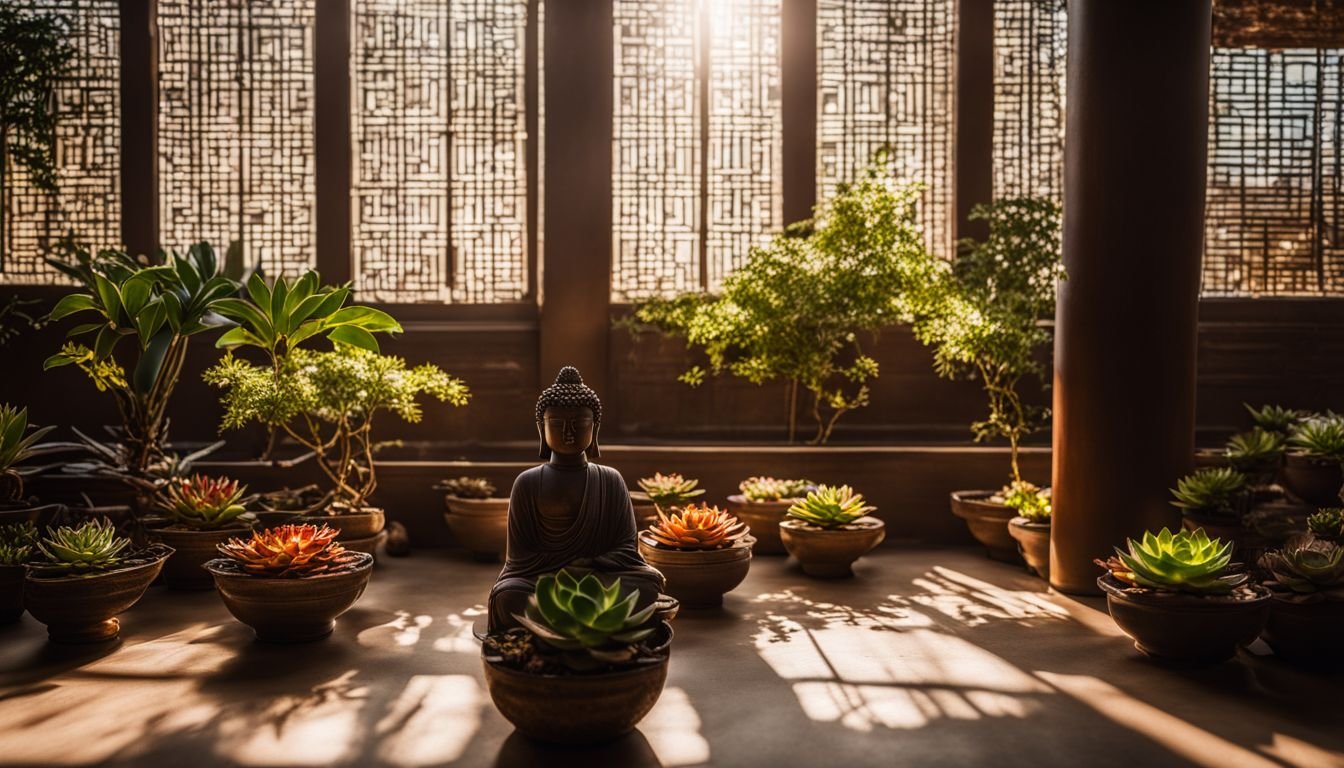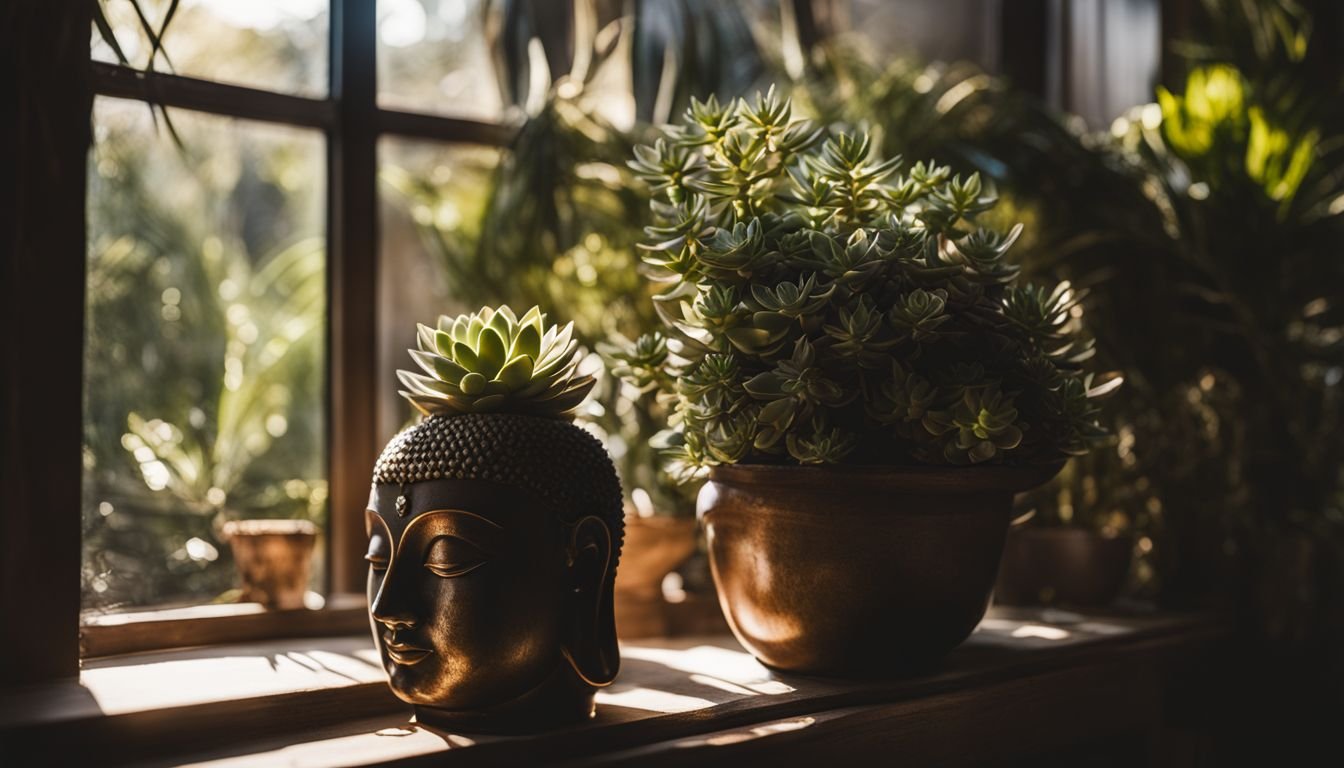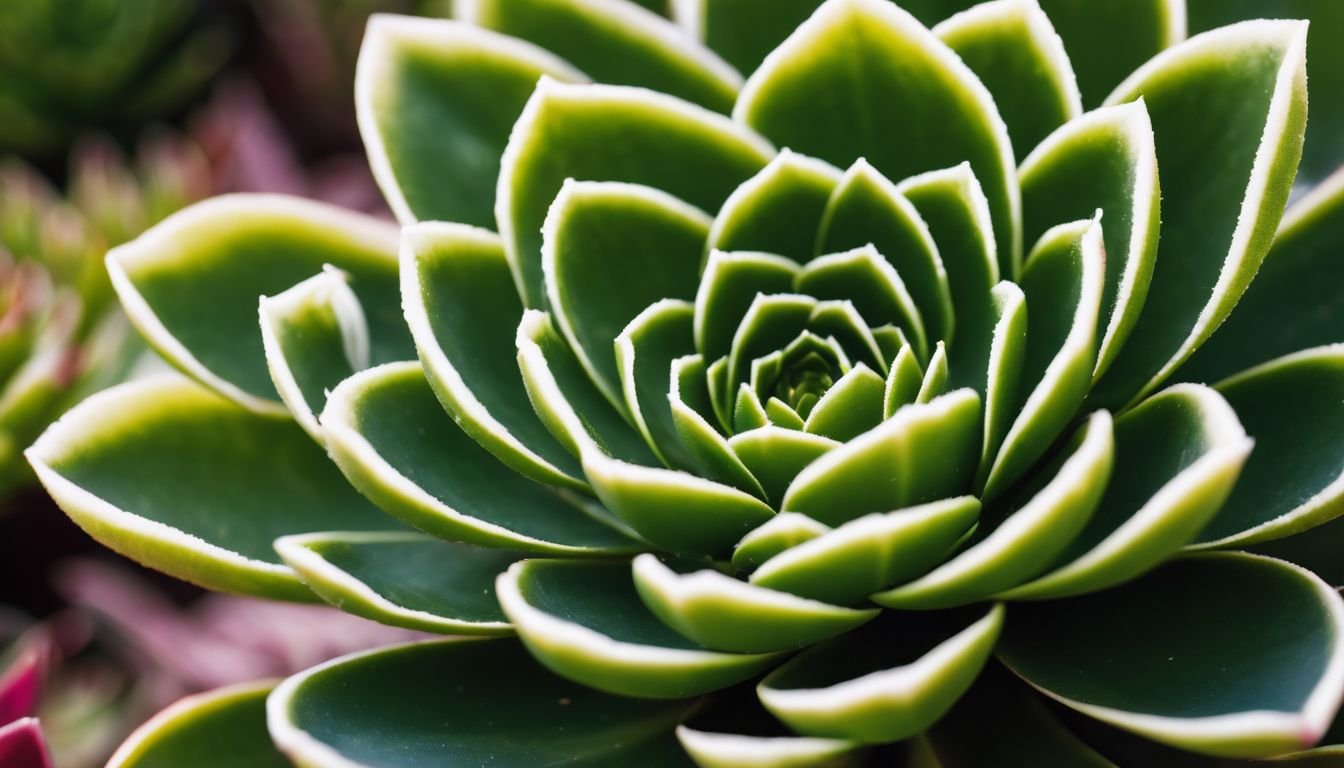Gardening down under presents a unique mix of challenges and rewards, especially when you’re dealing with succulents like the much-admired Crassula ‘Buddha’s Temple’. Many of us are drawn into the world of succulents by their low-maintenance allure and eye-catching looks, only to find ourselves scratching our heads, wondering why our green mates aren’t looking as chipper as they should.
The Buddha’s Temple, with its detailed leaf stack mimicking a Buddhist pagoda and the promise of charming pink flowers at full bloom, is especially entrancing but can also stir up a fair bit of concern over getting its care just right.
We know all too well that feeling when your gardening efforts don’t seem to pay off as hoped with these architectural gems. Upon digging deeper into this quirky issue, we found out these plants go for $9.55 each and there’s not many left on the shelves – a fact that underscores their hit status among Aussie plant lovers and ramps up the pressure to crack the code on caring for them without mucking it up.
This guide blends thorough research with real-deal experience to cut through the confusion. From getting their light diet spot-on to nipping common gremlins in the bud, we’ve packed this guide with sharp insights and hands-on advice crafted just for Aussie gardeners who are keen on keeping their succulents happy as Larry.
Ready to turn those gardening woes around?.
Key Takeaways
- Placing your Buddha’s Temple succulent in bright light and giving it some shade during the hottest part of the day helps it thrive. It loves soaking up rays but needs protection from sunburn.
- Use well-draining soil, like a cactus mix, for this drought-tolerant plant, and water sparingly to avoid root rot. The soil should feel dry before you give it water again.
- Repotting every two years into a slightly larger pot with fresh cactus soil keeps your succulent growing strong. Feed it balanced liquid fertiliser fortnightly during spring and summer.
- Watch out for pests like mealybugs and spider mites by inspecting regularly. Treat any infestations immediately with alcohol-soaked cotton swabs or mild insecticidal soap to keep your plant healthy.
- Protect the powdery coating on its leaves by watering directly into the soil instead of over the top. This unique feature helps the Buddha’s Temple survive in harsh sunlight but is easily damaged.
Understanding the Buddha’s Temple Succulent

The Crassula ‘Buddha’s Temple’ succulent brings a unique charm to Australian gardens with its striking columns of tightly packed leaves that mimic the appearance of a Buddhist pagoda.
This architectural plant not only captivates with its structure but also surprises us when it blooms, showcasing pink pompoms of flowers that add a dash of color to its green towers.
Available across all states in Australia at $9.55 per plant, it makes an accessible yet exclusive addition to rockeries, pots, or as an indoor feature in areas bathed in bright light.
Caring for this drought-tolerant plant involves understanding its love for sunshine and minimal water needs. Its powdery coating is nature’s sunscreen, shielding the vibrant green leaves from harsh rays while conserving moisture within.
We ensure our Buddha’s Temple thrives by placing it where full sun can reach its upward facing leaves and watering sparingly, just enough to satisfy without drenching the roots. A fascinating aspect is watching this hardy succulent grow up to 15 cm tall and bloom with white flowers that contrast beautifully against the greenery, making it a captivating subject for houseplant enthusiasts down under.
Essential Care Tips for Buddha’s Temple Succulent

We know how unique the Buddha’s Temple succulent is to Australian gardeners, thriving in conditions that mimic its native habitat. Let’s dive into personalised care strategies that ensure this drought-tolerant houseplant not only survives but flourishes in your space.
Ideal Light and Temperature Conditions
The Buddha’s Temple succulent thrives in bright light, making it a perfect match for sunny Australian gardens or well-lit spots indoors. This plant adores soaking up the rays but appreciates a bit of shade during the hottest part of the day to prevent sunburn.
Finding that sweet spot ensures your succulent will flourish, showcasing its unique architectural beauty.
For temperature preferences, this hardy plant stands up well to our climate’s challenges, embodying true drought tolerance. It relishes warmth and copes admirably with dry conditions, typical of many regions across Australia.
However, during colder months, it’s crucial to protect it from frost by bringing it indoors if potted or providing some form of cover outdoors. This care keeps your Buddha’s Temple looking splendid year-round.
Ensuring your Buddha’s Temple succulent sits in cactus soil complements its need for bright sunlight perfectly. This combination promotes healthy growth while mirroring its natural habitat conditions.
Keeping these factors in mind allows us to nurture houseplants that not only survive but thrive under our care and observation.
Watering and Soil Requirements
After ensuring your Buddha’s Temple succulent receives just the right amount of light and warmth, let’s dive into how to keep it perfectly hydrated and happy in its soil bed. We choose well-draining soil for this drought-tolerant plant, opting for a cactus mix or creating our blend with compost, sand or grit, and perlite.
This setup mimics their natural arid habitats, allowing roots to breathe without becoming waterlogged.
We water these plants sparingly, following the crucial mantra ‘less is more.’ During warmer months, give them a drink only when the soil feels dry to the touch — overwatering can do more harm than good.
As winter rolls around, we reduce watering further to match their slower growth rate. By sticking with these guidelines, we ensure our Buddha’s Temple succulents thrive without ever feeling thirsty or drowned.
Repotting, Fertilising, and Pest Management
With the right watering and soil mix sorted, let’s move to the next vital steps for your Buddha’s Temple succulent: repotting, fertilising, and pest management. These are key to maintaining a healthy, vibrant plant.
- Repotting: This succulent thrives in snug conditions but will eventually outgrow its pot. You should consider repotting every two years to give it space and fresh soil to continue growing strong. Choose a pot just one size larger than the current one to avoid overwhelming your plant with too much space. Always use cactus soil when you’re moving your plant to ensure it has the perfect growing medium.
- Fertilising: We love feeding our Buddha’s Temple with a balanced liquid fertiliser every fortnight during the growing season (spring and summer). This keeps it nourished without overdoing it. It’s crucial not to over-fertilise as this can harm more than help, so stick to the recommended dosage on the fertiliser package.
- Pest Management: Succulents can attract pests like mealybugs and spider mites, which thrive in dry conditions. To keep these unwelcome visitors at bay, inspect your plants regularly for any signs of infestation. If you spot pests, wipe them off gently with an alcohol-soaked cotton swab or spray them with a mild insecticidal soap solution. Remember, avoiding watering from above is important as it preserves the leaves’ natural powdery coating, making them less hospitable to pests.
- Powdery Coating Preservation: Speaking of that powdery coating—also known as farina—it’s what gives Buddha’s Temple its unique look but is easily damaged by handling or incorrect watering techniques. Water sparingly and directly into the soil to keep this protective layer intact.
Troubleshooting Common Issues with Buddha’s Temple Succulent
We’ve all faced challenges in keeping our beloved plants healthy and thriving, even the robust Buddha’s Temple succulent. Identifying common issues early on can save us from a lot of stress and keep our succulents looking their best. Here are some troubleshooting tips for caring for your Buddha’s Temple.
- Overwatering often leads to root rot, a common issue among succulents. Ensure you’re allowing the soil to dry out completely between waterings. Stick your finger into the soil; if it feels dry a couple of inches down, it’s time to water.
- Yellowing or drooping leaves signal that your plant may not be getting enough sunlight. Position it in a spot where it can soak up at least six hours of indirect sunlight per day to prevent these symptoms.
- The plant stretching out and becoming leggy is another sign of insufficient light exposure. Move it closer to a window or supplement with artificial grow lights to promote compact growth.
- Mealybugs and aphids pose significant risks if not managed properly. Inspect your plant regularly for any signs of pests and treat them immediately with an appropriate insecticide or neem oil solution.
- A nutrient deficiency could be at play if your Buddha’s Temple looks lacklustre despite proper watering and lighting. Feeding it with a balanced liquid fertiliser every month during the growing season will help replenish essential nutrients.
- Wilting or stressed plants might be crying out for more water, especially as temperatures rise during the warmer months. Increase frequency of watering, always checking that excess water drains away effectively to avoid root rot.
- Poor establishment in gardens often stems from unsuitable soil types. Planting your Buddha’s Temple in well-draining cactus mix helps mimic its natural growing conditions, leading to a happier and healthier plant.
Discover More Succulent Care Tips
Exploring the world of succulents extends beyond just Buddha’s Temple. Each species has unique needs, from sun exposure to watering schedules. We delve into various types, unveiling how some thrive in dry conditions while others prefer a bit more humidity.
Our journey through succulent care reveals tips for creating the perfect environment for these resilient plants.
Reaching out on Facebook invites a vast community of gardening enthusiasts to share their experiences and advice. It’s here where we exchange ideas on combating pests, choosing the right soil, and mastering the art of fertilisation.
The collective wisdom found within this community enriches our understanding and appreciation for nurturing these fascinating plants.
Conclusion
Caring for Buddha’s Temple succulent brings a touch of serenity and beauty to Australian gardens. Remember, these plants thrive in the right conditions, demanding attention to light, water, and soil specifics.
Keep your green mates happy with periodic checks and mindful care routines. They’ll reward you with striking visuals and possibly pink pompoms adorning their towers. Dive into this gardening adventure, keeping our guide close at hand for lush, thriving succulents that echo the tranquility of a Buddhist temple right in your backyard.
FAQs
1. How often should I water my Buddha’s Temple succulent?
Water your Buddha’s Temple when the soil completely dries out, usually every two weeks.
2. Does the Buddha’s Temple need a lot of sunlight?
Yes, it thrives in bright light but not direct harsh sunlight for extended periods.
3. What kind of soil is best for growing a Buddha’s Temple succulent?
Use well-draining soil specifically designed for succulents or cacti.
4. Can I grow a Buddha’s Temple indoors?
Absolutely, it can grow indoors as long as it gets enough bright light.
5. When is the best time to repot my Buddha’s Temple plant?
Repot your plant during springtime when it outgrows its current container.
